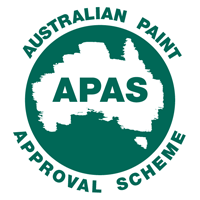No matter if you have recently installed a pool or whether your old pool needs recoating, there are pool coatings and paint available which can achieve your goals and sustain the lifespan of your pool.
It’s crucial you make the right choice when coating your pool. There are three primary types of pool coating: chlorinated rubber, epoxy coatings and fluoropolymers. We discuss the application and pros and cons of pool coatings in this blog edition.
Chlorinated Rubber …a little obsolete
Chlorinated rubber is slowly becoming obsolete as a pool coating. It has a waxy appearance, a sour aroma, is hard to apply and has a lower cost, but requires recoating regularly. Chlorinated rubber is used by very few pool owners these days. Chlorinated rubber products are great at retaining colours, however they are exceptionally prone to rapid degradation and, therefore, as mentioned above, must be recoated regularly. Chlorinated rubber pool coatings are low in solid content, so, as well as needing frequent reapplication, they require several coats to achieve the recommended thickness. When applied multiple times, a chlorinated rubber pool coating can last from one to three years before needing a recoat. This particular coating is most often used to coat public and school pools.
Epoxy Coatings…tend to fade quickly
Epoxy coatings are available in a range of different grades from A&I Coatings. Epoxy coatings have a versatile number of applications and perform well in industrial, marine, and corrosive environments. Epoxy coatings may be used to coat or recoat the surface of a pool as or after cracks begin to show. Epoxy coatings are incredibly common in Australian pools. They have good durability characteristics. This means they only need recoating every 5-8 years. However, epoxy coatings wear away and need two to four coats, depending on the quality of the solution, before they are safe to use. Epoxy coatings also fade in colour quickly, when exposed to UV light for prolonged periods. Regardless of their low resistance to sunlight, they are still a cheap and efficient solution for most pools.
Fluoropolymer Coatings…the ultimate
Fluoropolymer coatings are considered as the best coatings for use on pool surfaces. Fluoropolymer coatings have been adapted for use in extreme environmental conditions. When excessive moisture or heat is present, fluoropolymer coatings materialise a durable protective layer. They have extremely good scratch resistance and colour retention and an incredibly long lifecycle, from 10 15 to 20 years. Fluoropolymer coatings do not loose these characteristics over time, producing a long-lasting scratch resistance surface which can help protect the glossy full colour appearance of your pool surface. Fluoropolymer pool coatings are available from A&I Coatings in a range of different colours, varying from light to dark.
Which Pool Coating Do I Use?
All things considered, fluoropolymer pool coatings are the best option when considering which coating to use on the surface of your pool. Fluoropolymer coatings have been perfected over 40 years and now commonly use an intertwined mix of two polymer compounds to provide superior durability and extent product lifecycles.
How To Apply Pool Coating?
A&I Coatings supplies Vitreflon PoolPaint Paint n Forget as one of the highest-rated UV-resistance pool coating products on the market. It remains chemically consistent underwater and maintains its lustre 85% better than other competing fluoropolymer products. Application involves mixing Pack A and Pack B before application to the surface. Fluoropolymer pool coatings require a primer to be applied before the compound when used on top of porous concrete surfaces. The application of Vitreflon PoolPaint Paint n Forget extends to everything from fiberglass to non-porous concrete.
How Long Does Pool Coating Last?
Properly applied, A&I Coatings’ PoolPaint’s Paint n Forget V790 can last for ten to twenty years before reapplication is needed. The coating’s structural integrity is immense and may only suffer minimal damage from environmental factors over the course of its lifespan. Only an excess of chlorine can visibly damage a V790 fluoropolymer coating and may result in darkened spots where extreme excesses of chlorine are present. If you care for your pool properly and only add the precise amount of chlorine specified by manufacturer’s your pool coating should happily last a long time without suffering damage.
Contact A&I Coatings
All A&I products are 100% Australian made and we supply Vitreflon PoolPaint’s Paint n Forget fluoropolymer pool coating through Paint for Pools. Paint for Pools’ technical team is always ready to steer in right direction on your project Just call 0415 171 315 or email info@poolpaint.com.au if you have any questions about pool coatings.





